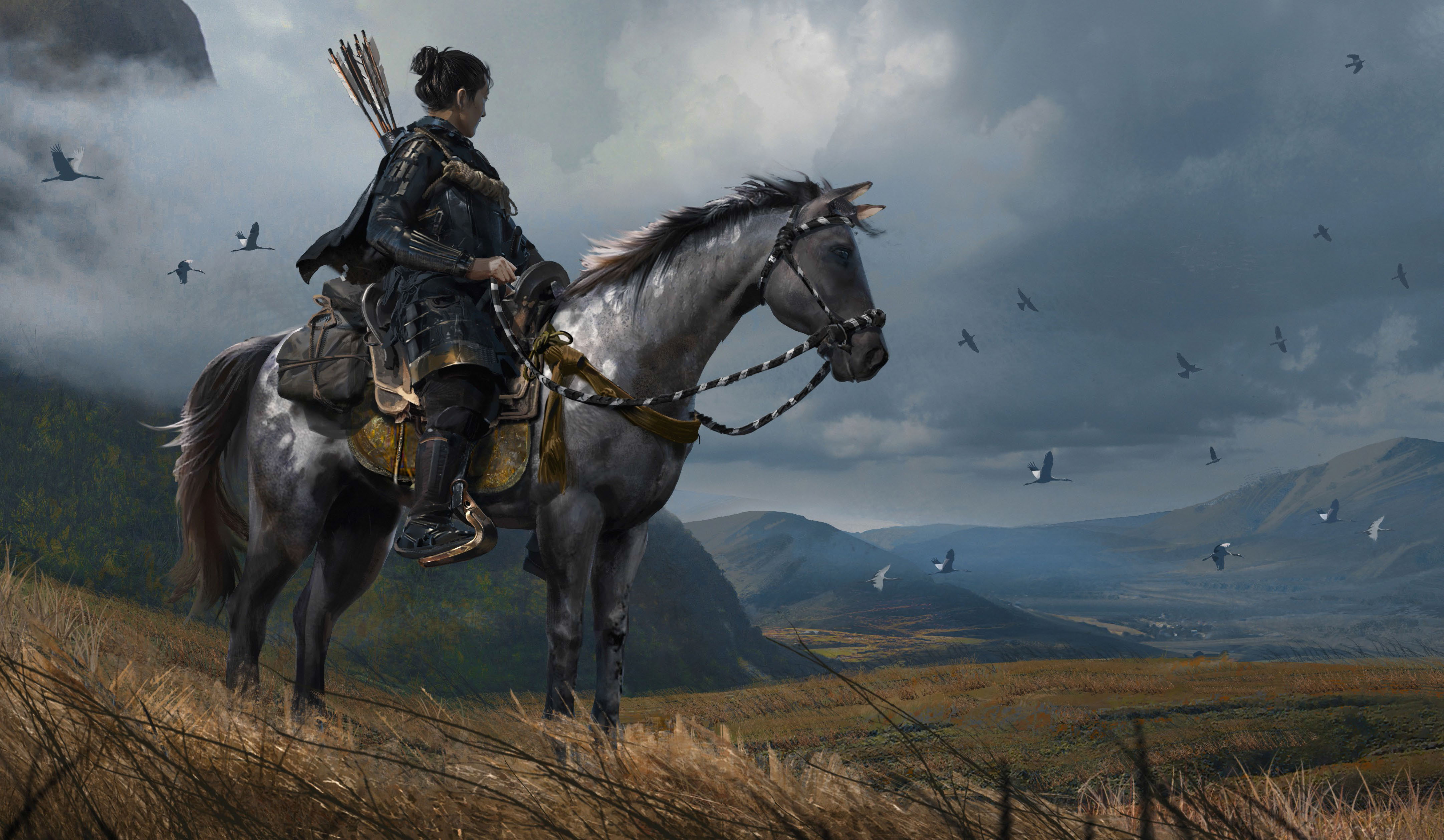
Concept art that incorporates animals such as birds is a subtle way to guide players from one location to the next
VIRTUAL CINEMATOGRAPHY ALSO MAKES USE OF LENSING, LIGHTING AND COMPOSITION TO DIRECT THE EYE OF THE VIEWER…
Branching out from the inFamous video game franchise where present-day humans with supernatural abilities decide to become either forces of good B or evil, Sucker Punch travels back to late 13th century Japan in Ghost Of Tsushima where a samurai goes from following his code of honour to adopting guerrilla warfare tactics in order to quell a Mongol invasion. “We chose the Mongol invasion of Tsushima in 1274 because the stakes of the battle were right there,” explains Nate Fox, creative director at Sucker Punch. “You would play as a samurai defending his home from foreign invaders, warriors who brought gunpowder weapons for the first time to Japan. What moral lines would that samurai have to cross in order to safeguard the people that he loves most? How would he have to evolve, bending his samurai code to succeed?” A cornerstone for the project was to create an open-world experience. “We set out to make a game about a samurai that wandered the countryside and helped his countrymen in a time of crisis. Giving players the freedom to choose where they wanted to go was key to capturing that feeling, which meant the game had to be open world.”